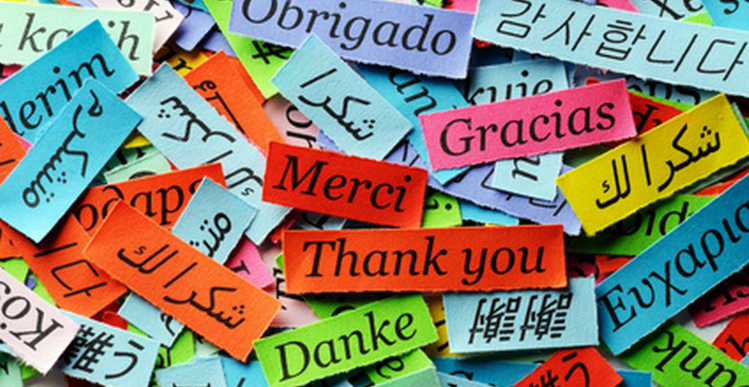If your company operates in the markets of several countries, then information about services should be provided in several languages. The technical creation of such a site is a topic for another conversation, and in this article, we will consider the subtleties of creating such a user experience that will bring conversions regardless of the region where users live. The site should not just present the services, its main task is to convert visitors into customers of the company. This applies to both online stores and corporate sites.

How to Implement Multilingualism on the Site so That the User Experience Is as Positive as Possible?
The number of languages on your site depends only on the number of markets with which you work. You should also understand that multilingualism is not only content written in several languages, but also the following features:
- The user should be able to see the prices of your goods and services in the familiar currency, as well as place orders in this currency.
- A multilingual website can offer the user a calculation of the value of the goods, including taxes according to international standards, if necessary.
- Each of the website translations should have its own URL – it means the same domain, but different subdomains.
- On each page of a multilingual site, there should be an icon in the form of a flag, by clicking on which, the user can select the desired language.
- Search engines index all versions of your site, regardless of language.
In addition to all this, the development of sites that support multiple languages at the same time is prestigious. Having visited such a site, users will immediately pay attention to the fact that they are dealing with a serious company.

The Advantages of the Multilingual Site
What benefits will give you a page that supports multiple languages? Here are the main ones that you can get:
- Increasing the level of competitiveness – a site with support for several languages will immediately raise you above the level of competitors who use only one language in their pages. And this, in turn, will entail an increase in potential buyers.
- A multilingual website looks more solid in the eyes of customers – by making a page in several languages, you show the user that they are ready to adapt to their expectations, provide a high level of service and work on the image.
- Many languages are the first step to expanding your business internationally. If people who live in different countries know about your store, this will lead to an increase in sales on an international scale.
It is also worth noting that the creation of a multilingual site makes sense when several languages are used simultaneously in your country. Now let’s move directly to the elements of user experience, thanks to which a user from any country will feel comfortable on your site.
Products, News, Promotions, Banners Should Be Different for Each Target Audiences
At first, it will seem to you that news, products, and articles in all language versions will be the same, and you just need to store and display texts in different languages.

As soon as you put such logic in the project, it turns out that, for example:
- the news about the opening of the third branch in New York is not interesting for Europeans,
- for China, you offer a separate range of products,
- the action developed exclusively for Latin America should be visible only to users from these countries.
Content will not be the same for all at 100%. The site should allow you to:
- easily duplicate records and translate them;
- make it so that a specific entity is displayed in one language version and not displayed in another.
The ideal option is when the structure does not change in language versions. If necessary, the structure can be changed, you can hide unnecessary sections on foreign versions, disable active forms or, on the contrary, add content that will be necessary. Displaying relevant content is one of the main keys in working with users, regardless of the type of business, so pay attention to what type of content and to whom you will show in different language versions.
Make Sure You Have Translated CMS system messages As Well
It is unlikely that your site’s CMS was written from scratch specifically for it. Accordingly, the system developer wrote error messages and technical notifications in his native language and did not think about multilingualism.
If such messages sometimes appear on the “face” of the site, they will also have to be translated so that users do not fall into an even greater stupor.
Provide Messages and Files of External Modules in the Native Language
If you have installed a photo gallery plugin, an audio player or a third-party flash-downloader, you will have to not only understand what they output but also check the encoding in which they work. Your task is to make it so that all the notifications that your site issues are shown to each user in their native language.
Content Customization is Your Primary Task
Before undertaking the translation of content, it is necessary to determine how it would be better to convey information to the consumer so that it will be perceived as loyal as possible. It is not enough to translate existing articles — you also need to take into account the cultural and national characteristics of your target audience. It is also very important to correctly determine in which style the information should be presented. After all, for the target audience from different countries, the same abstracts can be submitted in a businesslike or informal style.

Moreover, modern sites often include not only information from the administration but also user-generated content. Such information can not be translated, and you are doomed to have a mess of languages. Technically, it will be more reasonable if users see only those comments that were written by other users in their language. In addition, you can show them information in English for more discussion.
Your Legally Relevant Texts Should Be Translated Taking Into Account Each Word and Local Legislation
It’s quite simple to translate the news into Spanish or even Chinese. The price of the error is small, even if the text remains rough or you leave a few words in the original language.
However, it is wrong to simply translate a public offer or service rules. You need a lawyer with knowledge of the language, local specifics, and understanding of your business. And this is a great rarity.
The situation is even more complicated if you make a printed form for a document that meets the requirements of local legislation. In addition to a lawyer and a translator, you will need a designer and a programmer — a separate interface is likely to emerge that is nontrivially associated with the rest of the site.
As a result, translation of legal texts is usually done only when a full-fledged business representation opens in the country. Therefore, if this is about you, make sure that all such documents are correctly translated according to the laws of each country. Thus, potential customers will immediately be able to assess the conditions and advantages of working with you and make a choice, having all the information.
Consider the Different Lengths and Directions of Texts in Different Languages

You might not know this, but: the language has no direction, but the alphabet has. For example, in Azerbaijani, it is possible to write in both Latin and Cyrillic alphabets, if we write from left to right. And if we write from right to left, then we can use the Arabic alphabet.
Most languages use alphabets with writing from left to right. But if we need the opposite, then it is necessary to mirror the entire page – the text, images, menus, sidebars, buttons, lists, scroll bars and everything else should be redone into mirror reflection for the convenience of the user.
A particular problem for the designer is when the text is a design element. Therefore, it is best to avoid text banners and other graphics associated with writing text. In multilingual websites, the design should be as concise as possible and it is advisable to use the most familiar and simple menus for navigation.
Learn the Views and Values of New Users Before Posting Pictures and Photos
Many elements on the sites are made by pictures, from logos to currency symbols, inscriptions on discounts and the like. HTML 5 changes the situation, but you can hardly find a website that could be translated without creating foreign versions of images.
Different countries have different ethical views. There are various concepts of humor, symbolism, relationships, etc., which are easily overlooked when translating a website. For example: in some countries, it is considered acceptable to show photos of gay couples, while in others it may be offensive.
Make Sure Users Receive Email Notifications in Their Own Language

Sites send notifications about registration, ordering, unsuccessful login, attempt to change the password and the like. You can make e-mail notifications understandable to a foreigner (and there are not only text but also links, external pictures), only with the help of a translator and a programmer.
Follow National Standards for Currencies, Calendar, Letter Processing
Different countries have their own rules for writing dates, currencies and even business correspondence. If you ignore them, you may be understood and forgiven. However, if we want to create the most positive user experience, we need to consider everything.
Translate All Fields and Inscriptions in the Client’s Personal Account
In the case of the personal account of the client of the online store, you will have to translate it completely and as correctly as possible, and this is a very responsible and time-consuming task. Inaccuracies in the translation in your account are simply unacceptable! Otherwise, you will not only spoil the whole experience but also ensure that users do not want to continue working due to difficulties and ambiguities.
Understand the Subtleties of Optimization
Each language version of the site should be optimized also taking into account the peculiarities of the target audience because in different countries users can make completely different requests for the same subject matter and process the information received in different ways. Therefore, it is worthwhile to thoroughly examine how the audience from different countries will use the content offered on the site before performing the optimization.

In most countries of the world, Google is the preferred search engine, so most of the time, it’s worth focusing on it. The exceptions are China, Japan, the Czech Republic, Russia, and Korea.
For your target audience abroad, you need to accurately determine the version of the search engine under which the site will be promoted. So, Google has different versions of the search algorithm for different countries. In this case, the Germans, for example, will look for information in Google.de, the Spaniards – in Google.es, etc.
Take Into Account the Features of Multilingual Site Contextual Advertising
In fact, this item should have been put first on our list of things that need to be considered so that the user of an international site could feel at home. After all, most often the first impression of a product or service on the Internet is formed through contextual advertising.
Therefore, when using such a tool, it is important to remember about the text and language of ads and pictures, their correspondence to the geographic location of the target audience. Carefully consider setting links: they should redirect to the desired language version of the site.
If remarketing is used on the resource, check if the pages that your guest has visited are displayed correctly.
Conclusion
As you can see, there are many pitfalls you need to take into account. Our advice is to move consistently from one language version to another, depending on their priority. Here, the main rule of marketing continues to be relevant – learn the features and expectations of the target audience, and half the work has already been done. Good luck!
About the Author

William Rodgers is a content writer who’s currently working for The Word Point, an international translation service . As he knows several foreign languages, William’s main focus is writing SEO articles for businesses that want to drive their brand in the international market. His goal is to continually help more marketers fill Google search results with content that really matters.



